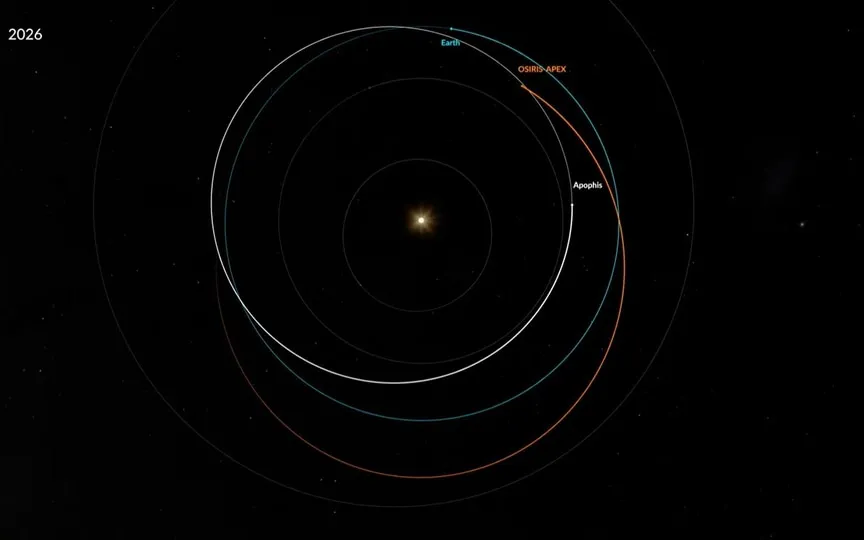Exploring the Asteroid Apophis: NASA’s OSIRIS-APEX Ready for Unprecedented Solar Voyage!
NASA’s OSIRIS-APEX spacecraft, previously named OSIRIS-REx, is actively preparing for an unprecedented solar approach to the asteroid Apophis. This approach will bring the spacecraft closer to the Sun than ever before, with its closest point, known as perihelion, scheduled for January 2, 2024. At this time, OSIRIS-APEX will be approximately 46.5 million miles away from the Sun, which is about half the distance between Earth and the Sun and within the orbit of Venus. NASA has emphasized that this close encounter will expose the spacecraft’s components to higher temperatures than originally intended.
OSIRIS-REx to OSIRIS-APEX
Sandy Freund, OSIRIS-APEX program manager at Lockheed Martin Space in Littleton, Colorado, highlighted the team’s creativity during the spacecraft’s flight, pushing the boundaries to meet mission requirements. To prevent overheating during the approach to the Sun, the spacecraft maintains a fixed orientation relative to the Sun. In addition, one of its solar panels is repositioned to protect the most sensitive components, a safe configuration according to thermal models.
Dani Mendoza DellaGiustina, OSIRIS-APEX principal investigator at the University of Arizona in Tucson, highlighted the extensive modeling that has been done to ensure the safety of the spacecraft. However, DellaGiustina acknowledged the inherent risks of exceeding the design criteria for spaceflight hardware.
OSIRIS-APEX’s mission after the solar flare
Asteroid Apophis is expected to come within 20,000 miles (32,000 kilometers) of Earth in 2029. OSIRIS-APEX is scheduled to enter Apophis’ orbit shortly after this close approach to assess the impact on the asteroid’s orbit, rotation rate, and surface. Observers in the Eastern Hemisphere in particular have the opportunity to witness Apof with their naked eyes.
The upcoming perihelion marks the beginning of OSIRIS-APEX’s ambitious mission, which will include six close solar passes and three Earth gravity passes. These maneuvers are strategically planned to culminate in OSIRIS-APEX at Apophis in April 2029.
Discovered in 2004, Apophis was initially classified as one of the most dangerous asteroids that could hit Earth. However, it has since been removed from the impact risk list.




